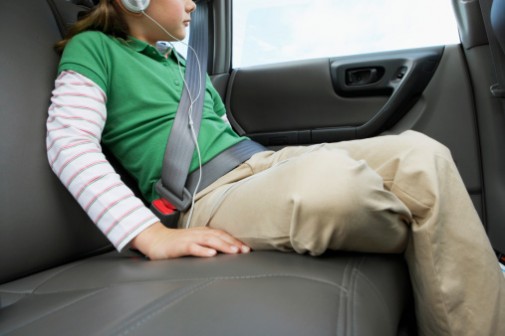Fatalities increase with improper seat belt use

We are taught safety first when it comes to driving, especially when it comes to buckling up. And although the law requires a seat belt to be fastened, many may not know the true harm of an improperly worn seat belt.
A study from the Norwegian Institute of Public Health (NIPH), is stressing the importance of proper use of the seat belt and why loose objects pose another threat.
The study found that nine out of 10 children were “seriously or fatally injured” in a car accident due to not being restrained properly or by objects in the vehicle.
The researchers, in partnership with the NIPH and Oslo University Hospital, looked at serious car accidents from 2007 to 2013, which included 115 cars and 185 children. The study examined the typical injuries reported, as well as reconstructing events that happened inside each car, and reviewed roadside traffic patterns. Researchers found that more than one in three kids were improperly restrained, and a fourth of the kids were surrounded by loose, large items in the vehicle.
They found that four to seven year olds were the age group with the highest percentage of improperly worn seat belts.
Researchers stressed that wearing a seat belt properly is key if a car accident were to occur. They concluded that high speed roads and those that don’t have crash barriers were a main contributor to serious injuries.
Researchers said, in the press release that, “the most common error is that the seat belt is misplaced, with the shoulder belt under the arm or behind the back, or the lap belt is placed too high on the abdomen.”
They also noted that when a child was correctly seated and secured, there was a much lower risk of injury, even in a serious accident.
“We see that adults want to protect their children but they may lack knowledge of what can happen if the equipment is not used properly. The aim of this study was to evaluate the incorrect usage of child restraint in the vehicle, related to the child’s height, age and type of equipment. In this way, we can give advice to parents, authorities and particularly the motor industry,” said Skjerven-Martinsen in the NIPH press release.
Related Posts
Comments
6 Comments
About the Author
Sarah Scroggins, health enews contributor, is the director of social media at Advocate Health Care and Aurora Health Care. She has a BA and MA in Communications. When not on social media, she loves reading a good book (or audiobook), watching the latest Netflix series and teaching a college night class.


















Interesting, especially for our grandchildren.
Your article is incomplete. State Farm Insurance and the Children’s Hospital of Philadelphia teamed up and did research with similar results in 2000. The result of the research was the recommendation that parents use booster seats for children after they outgrow their child seats up to about age 8. Most states now require the use of booster seats for these children. The proper use of booster seats goes a long way in solving the problem that was outlined in your article.
A solution to much of this problem would be the use of booster seats. In research that was done by State Farm and the Children’s Hospital of Philadelphia In 2000 much of the same result as outlined in the article was found. The result of the research was the recommendation of the use of booster seats for children who outgrew the use of child seats up to about the age 8. Most states now require the use of booster seats.
Seat belts also aren’t designed for short adults. I’m 5’2″ and I use a special plastic clip that helps me adjust the belt so that it doesn’t pull across my throat but rather keeps the bottom part across my pelvis and the top part of the shoulder belt across my chest and shoulder. Without that clip, the bottom part rides up across my stomach and the shoulder part cuts against my neck. Anyone with a shorter torso or under 5’5″ should consider getting one of those clips at a local automotive supply story such as Auto Zone, Advance Auto Parts, Pep Boys, etc. They’re cheap and usually come in pairs, so that you can have one on each of the front seats.
The article is still incomplete because it talks about things in the car hurting children but it doesn’t give specifics as to what kinds of objects, shape of objects, where objects were stored… then the article completely forgets that it even brought it up. When you have kids, you bring lots of things with you, every parent of little ones knows that.
A seat belt only works properly when it is used correctly. Twisted seat belts or wearing them behind your shoulders won’t do the job. It is also essential to use car seats that function and have not been recalled.